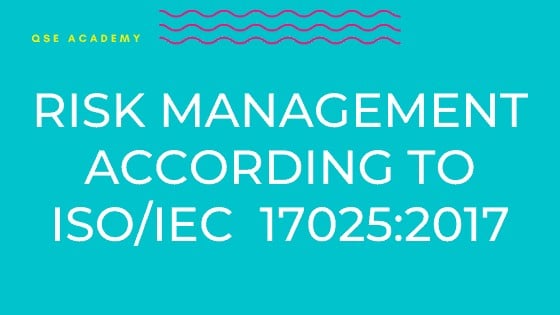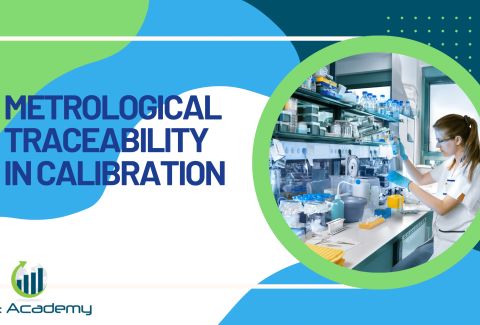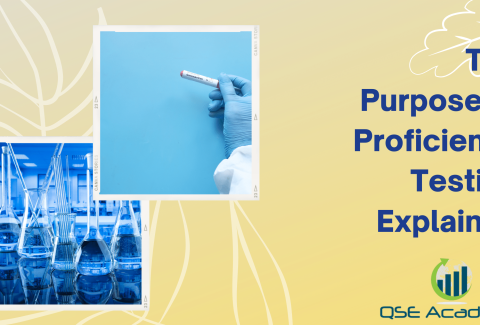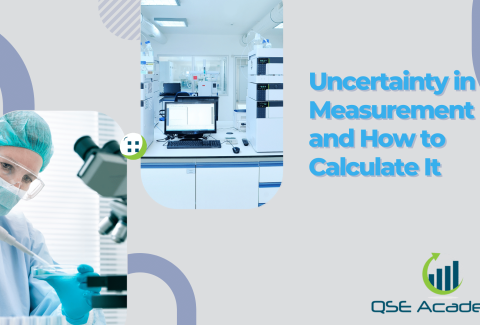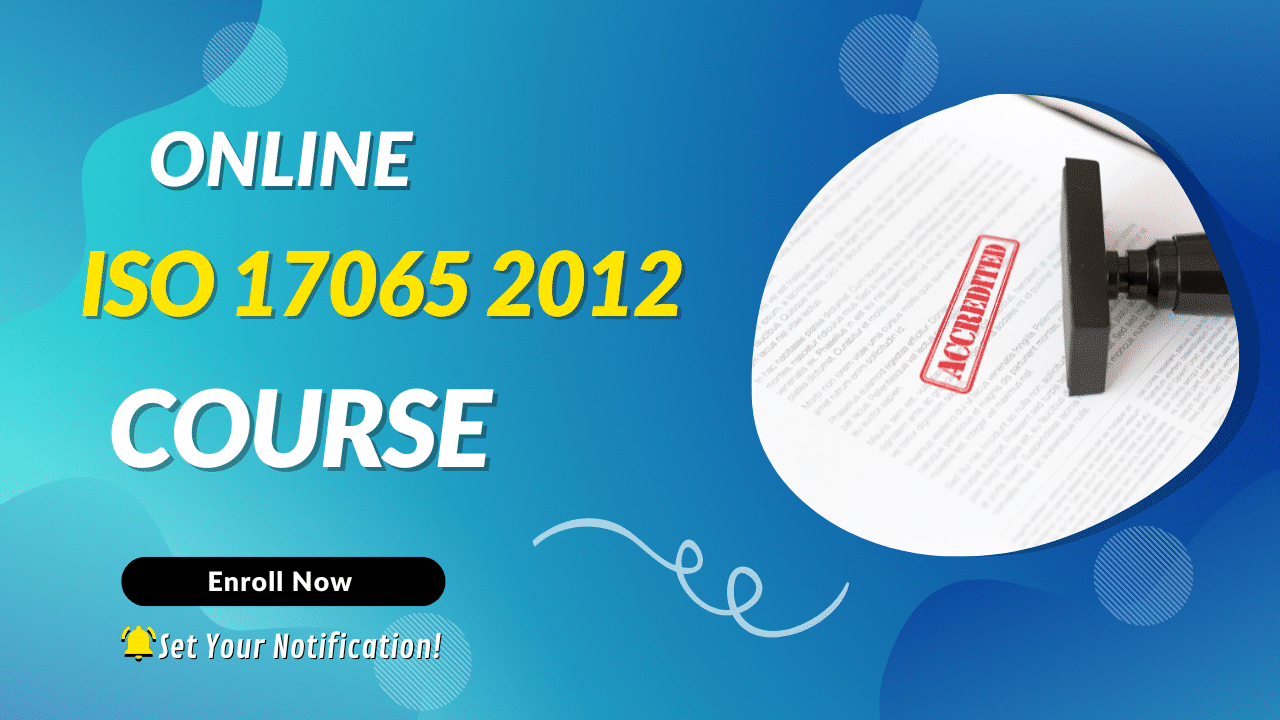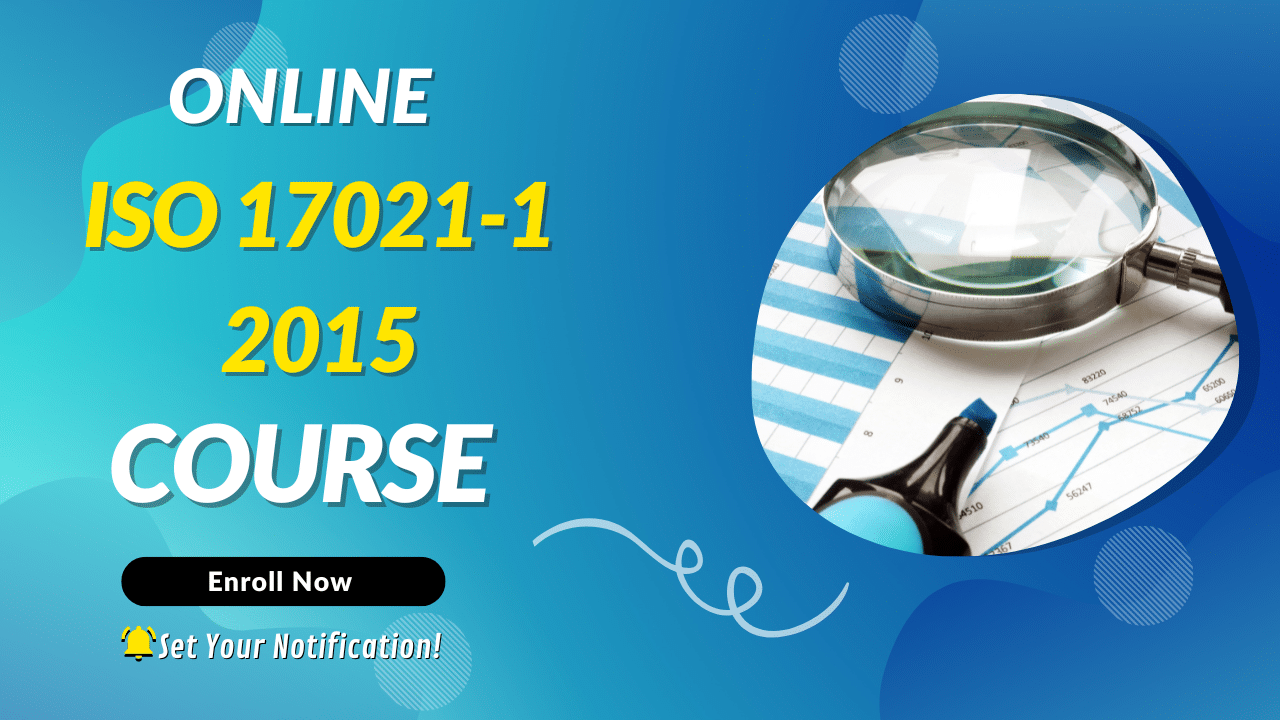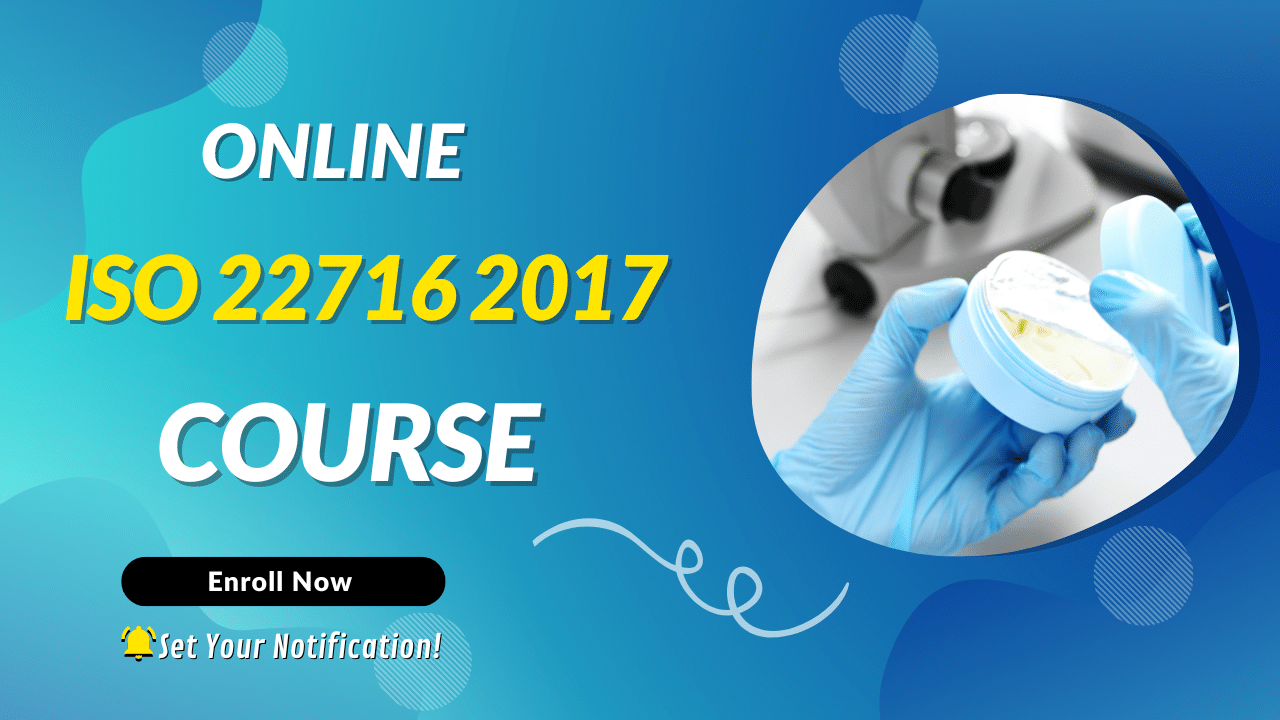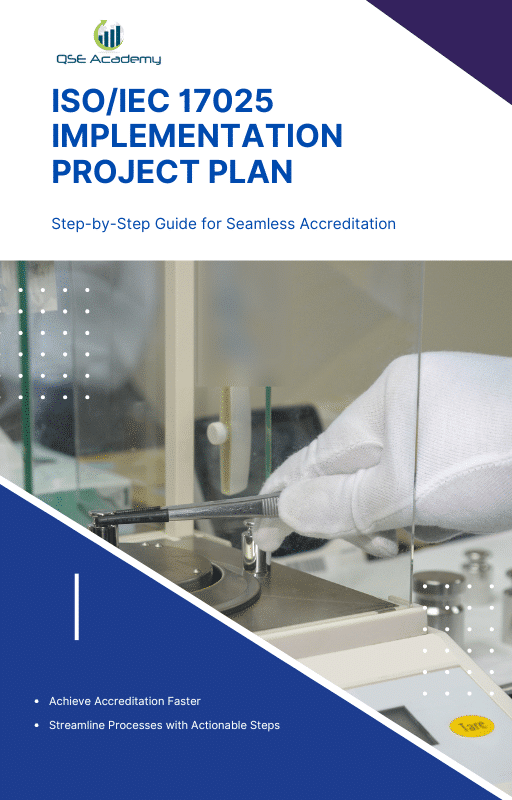Better Risk Management according to ISO 17025 2017
Risk Management in ISO/IEC 17025
Let’s face it—laboratories deal with a lot of moving parts. From testing procedures to equipment maintenance to staff responsibilities, there’s always something that can go wrong. That’s why Risk Management in ISO/IEC 17025 isn’t just a box to tick—it’s a way of thinking that helps labs stay consistent, reliable, and trustworthy.
But what exactly does “risk management” mean in this context? In simple terms, it’s the process of identifying things that could go wrong (risks), thinking ahead about how to handle them, and putting controls in place to reduce the chances of those things happening—or to deal with them quickly if they do.
ISO/IEC 17025:2017 doesn’t require a big, complicated risk register or corporate-level strategy. Instead, it asks labs to build a risk-based mindset into the way they operate every day. Let’s start by looking at the actual clause in the standard that covers this.
Understanding Clause 8.5: Where Risk Lives in the Standard
When it comes to Risk Management in ISO/IEC 17025, everything starts with Clause 8.5. This section of the standard focuses on actions to address risks and opportunities, and it’s surprisingly straightforward once you strip away the jargon.
Here’s what you need to know:
What ISO/IEC 17025:2017 Actually Says About Risks
Clause 8.5 doesn’t ask you to list every single possible risk on the planet. Instead, it tells labs to:
-
Identify potential risks and opportunities that could impact the validity of results, the integrity of lab operations, or the lab’s ability to meet client and regulatory requirements.
-
Plan actions to address those risks and opportunities.
-
Integrate those actions into the lab’s management system.
-
Evaluate the effectiveness of the actions taken.
In short, Risk Management in ISO/IEC 17025 is more about thinking ahead than filling out paperwork.
The Shift from Preventive Actions to Risk-Based Thinking
If you’re used to older versions of ISO standards, you might remember a whole section dedicated to preventive actions. That’s no longer the case.
The 2017 version of ISO/IEC 17025 dropped the specific clause for preventive action and replaced it with this broader concept of risk-based thinking. Why?
Because risks (and opportunities) are always present. Instead of reacting to problems after they happen, the idea is to be proactive—think about what could go wrong before it does, and build that thinking into your lab’s processes.
So instead of waiting for a mistake and then asking, “How can we stop this from happening again?”, Risk Management in ISO/IEC 17025 encourages you to ask, “What could go wrong—and how can we prevent it in the first place?”
This small shift makes a big difference. It means risk isn’t just something you think about during audits—it’s something that becomes part of everyday lab life.
Identifying Risks That Actually Matter in a Lab
Now that we’ve covered where Risk Management in ISO/IEC 17025 fits into the standard, let’s talk about something even more important: what kinds of risks are we actually talking about?
Not all risks are worth stressing over. The goal here isn’t to make a giant list of every tiny thing that might go wrong. It’s about focusing on the risks that could really affect the quality of your results or the trust your clients place in your lab.
Real-World Examples from Testing and Calibration Labs
Here’s the thing—Risk Management in ISO/IEC 17025 isn’t theoretical. It plays out in real ways every day. Let’s look at a few examples of risks that matter in practice:
-
Instrument malfunction: A poorly maintained or uncalibrated instrument can give inaccurate results. That’s a risk with a direct impact on result validity.
-
Staff error: If someone doesn’t follow the test method exactly—or skips a step out of habit—it could lead to nonconforming results.
-
Environmental conditions: Things like temperature, humidity, or vibration might mess with sensitive tests if they’re not controlled.
-
Unclear client requirements: Misunderstanding what the client actually needs can lead to delays, rework, or even lost business.
These are the kinds of risks that Risk Management in ISO/IEC 17025 is really about. It’s not about creating a risk for every hypothetical “what if,” but identifying the real, practical issues that can impact performance, confidence, or compliance.
Operational, Technical, and Reputational Risks in Context
It helps to group risks into three main categories so your team can stay focused:
-
Operational risks – These are tied to your lab’s day-to-day processes. Think: staffing issues, delayed supplies, or inconsistent procedures.
-
Technical risks – These affect the validity and reliability of test or calibration results. For example, incorrect reference materials or improperly validated methods.
-
Reputational risks – These impact how clients or regulators see your lab. A single mistake (especially if it’s repeated) can shake trust, even if the results were technically fine.
Understanding where risks come from makes it easier to control them. And this is the real spirit of Risk Management in ISO/IEC 17025—building awareness into your daily routines so you catch small problems before they become big ones.
If you’re thinking, “Okay, but how do we actually spot these risks in the first place?” — good question. That’s exactly what we’ll tackle in the next section: Simple Methods for Applying Risk-Based Thinking.
Ready? Let’s go.
Documenting Risk Management in ISO/IEC 17025 Without Overdoing It
Here’s something that trips up a lot of labs: how much do you really need to document when it comes to Risk Management in ISO/IEC 17025?
The truth is—ISO/IEC 17025 doesn’t demand piles of paperwork. It just wants you to show evidence that you’re aware of the risks in your lab, you’ve planned how to address them, and you’ve taken appropriate action.
So, let’s make this easy.
What Auditors Actually Want to See
Auditors aren’t expecting you to hand over a 50-page risk report. They’re looking for signs that you’ve:
-
Identified relevant risks and opportunities (even informally).
-
Decided on actions to handle those risks.
-
Followed through on those actions.
-
Checked later to see if the actions were effective.
That’s it. That’s the core of Risk Management in ISO/IEC 17025.
You don’t need a fancy risk register or a custom risk software system. In many cases, your existing forms, reports, or even meeting notes can cover it—if they reflect your risk thinking clearly.
Smart Ways to Record Risk Without Creating Extra Work
If you want to keep your documentation lean and useful, here are some simple approaches:
-
Use a short risk log
A single table with columns like: Risk, Impact, Likelihood, Control Measures, Responsible Person, and Status. Clean, to the point, and effective. -
Include risk notes in procedure reviews
Every time you revise a method or SOP, just add a line that says, “Reviewed for potential risks — none identified” or “Added extra control due to risk of mislabeling.” -
Tag risks inside audit or review reports
If something comes up during an internal audit or a management review, document the discussion and note the decision made. That’s active Risk Management in ISO/IEC 17025 right there. -
Keep it living, not static
A dusty risk register that no one updates won’t help you—or impress auditors. The idea is to make it part of your working system, not a separate document that gets ignored.
The big takeaway? ISO wants you to be thoughtful, not buried in forms.
With Risk Management in ISO/IEC 17025, the focus is on intentional action—not on how beautiful your documentation looks. If you can explain what risks you considered, why you made certain decisions, and how you checked they worked—that’s more than enough.
Integrating Risk Management into Daily Lab Operations
So far, we’ve talked about identifying risks, choosing the right method, and documenting your approach. But here’s where it really starts to matter: making Risk Management in ISO/IEC 17025 part of the everyday rhythm of your lab.
This doesn’t mean holding weekly risk meetings or printing posters with the word “RISK” in bold letters. It means building habits, conversations, and awareness into what your team already does—so that risk management becomes second nature.
Making Risk Awareness Part of the Lab’s Culture
If you want Risk Management in ISO/IEC 17025 to actually work, it has to go beyond a few forms or occasional reviews. It needs to live in your lab’s culture.
Here’s how to embed it naturally into day-to-day life:
-
Start with training—but keep it practical
When onboarding new staff or refreshing procedures, don’t just say “be careful.” Instead, explain why certain controls exist. For example, “We double-check this sample ID because it reduces the risk of mixing up results.” -
Encourage “speak-up” moments
If someone sees something unusual, they should feel safe to say, “This doesn’t look right.” Creating an environment where people can raise small issues before they turn into big problems is a powerful form of Risk Management in ISO/IEC 17025. -
Ask risk-based questions regularly
During routine meetings or task reviews, slip in questions like:
“Are there any new risks we should be aware of?”
“What’s changed that could affect this process?”
It keeps risk awareness active without making it a big deal. -
Reward prevention, not just correction
When someone catches a potential issue early, acknowledge it. That helps reinforce the behavior you want: spotting risks, not just fixing errors after the fact.
Roles of Lab Staff in Continuous Risk Identification
One of the best things about Risk Management in ISO/IEC 17025 is that it’s everyone’s job—not just the manager’s or the quality officer’s.
-
Technicians might notice a test result that doesn’t “feel” right—or see wear on a piece of equipment before it fails.
-
Supervisors often catch trends, like a specific method that always needs rework.
-
Administrative staff may spot issues with client communication or unclear test requests that lead to confusion.
When you build a team that’s used to noticing and flagging risks, you don’t need a formal system to catch problems—because your people become the system.
That’s the heart of Risk Management in ISO/IEC 17025: real people, in real labs, using real awareness to keep things running smoothly.
Link Between Risk and Opportunities in ISO/IEC 17025
Here’s a twist that often surprises people: Risk Management in ISO/IEC 17025 isn’t just about avoiding bad things. It’s also about spotting good things—opportunities—that can help your lab grow, improve, or innovate.
Sounds odd at first, right? We usually associate “risk” with problems. But in the ISO world, risks and opportunities are two sides of the same coin. And when you understand this link, you can turn a basic risk process into a real tool for improvement.
How ISO Wants You to Shift Your Mindset
ISO/IEC 17025:2017 takes a broader approach than just “don’t let things go wrong.” Instead, it encourages labs to think like this:
-
If something could go wrong, how do we prevent or control it?
-
If something could go right, how do we make the most of it?
That second question is what transforms your risk-based thinking into a tool for progress.
For example:
-
A recurring client complaint isn’t just a risk—it’s also an opportunity to improve your service and strengthen client loyalty.
-
Identifying a bottleneck in sample processing might be a risk to turnaround time, but solving it could open the door to taking on more work.
-
Catching equipment instability early is a win because it protects results—but it might also highlight the opportunity to invest in better technology.
That’s the beauty of Risk Management in ISO/IEC 17025. It’s not just defensive—it’s strategic. You’re not only protecting your lab; you’re positioning it to do better work, serve more clients, and adapt to change.
Turning Nonconformities into Proactive Improvements
Another way to look at this is through nonconformities. When something goes wrong, most labs jump into corrective action mode. And that’s important.
But Risk Management in ISO/IEC 17025 nudges you to go a step further. After you fix the issue, ask:
-
What underlying risk did this nonconformity expose?
-
Could this risk show up in other areas?
-
Is there a bigger improvement we can make beyond just correcting the error?
When you start thinking this way, your lab stops reacting—and starts evolving.
The more you link your risk process to opportunities for better performance, the more value you’ll get from it. And honestly, it makes risk management feel less like a burden and more like a smart way to run your lab.
Risk Management Review During Internal Audits and Management Reviews
By now, you’ve probably noticed a theme: Risk Management in ISO/IEC 17025 isn’t meant to sit on a shelf. It’s meant to show up in the real work your lab does. And two of the most important places where that shows up? Internal audits and management reviews.
These aren’t just box-checking exercises—they’re your best chance to step back, take a breath, and ask, “Is our risk approach actually working?”
How to Present Your Risk Controls During Audits
Let’s start with internal audits. When your auditor comes around (whether it’s an external body or your own team), they’ll want to see how you’re applying Risk Management in ISO/IEC 17025. But don’t panic—it’s not about perfection.
What they’re really looking for is:
-
Evidence that you’ve identified relevant risks: Can you show that you’ve thought through where your lab might be vulnerable?
-
Actions you’ve taken: Are there control measures in place? Even small things, like adding a checklist or reinforcing staff training, count.
-
Follow-up: Have you reviewed your risks recently? Are you keeping them current based on changes, incidents, or improvements?
One of the best ways to make this review go smoothly is to link risks directly to your procedures. That way, when you audit a process, you’re also naturally auditing the related risks—and that shows auditors that risk thinking is embedded in your system.
What Top Management Should Actually Review
Now, let’s talk about the management review. This is where Risk Management in ISO/IEC 17025 gets a bit more strategic. Your top management doesn’t need to get into the weeds of every risk, but they do need to know:
-
What are the major risks and opportunities that could affect the lab’s ability to deliver valid results?
-
What actions have been taken to address these?
-
Are the current controls working—or are new ones needed?
-
Are there new risks on the horizon (like staff turnover, regulation changes, or new testing scopes)?
This part isn’t about just reviewing a list—it’s about making smart, informed decisions. If risk management is done well, it gives management clarity. It helps them decide where to invest, where to improve, and where to be cautious.
So don’t treat these reviews as paperwork. They’re where Risk Management in ISO/IEC 17025 proves its value.
The more naturally you bring risks and opportunities into these discussions, the easier it is to show that your lab is not just reacting to problems, but actively managing them—and growing in the process.
Common Mistakes in Risk Management in ISO/IEC 17025
Let’s be honest—Risk Management in ISO/IEC 17025 sounds simple in theory, but in practice, it’s easy to go off track. Many labs fall into a few common traps, usually with the best intentions. The good news? Once you know what to avoid, it’s much easier to keep things on the right path.
Mistake #1: Overcomplicating Risk Registers
This one shows up a lot. Labs create these massive risk registers with every possible “what if” imaginable. The document looks impressive—but no one actually uses it.
Here’s the thing: Risk Management in ISO/IEC 17025 doesn’t ask for volume—it asks for value. If your risk list is so long or technical that nobody understands it, it’s not helping your team stay alert or make better decisions.
Keep your risk records focused, updated, and practical. A short, relevant list that people actually refer to is far better than a huge spreadsheet that gathers dust.
Mistake #2: Treating Risk Like a One-Time Activity
Another common mistake? Thinking that once you’ve “done” risk management, you can check the box and move on.
But Risk Management in ISO/IEC 17025 isn’t a one-off task—it’s an ongoing mindset. Risks change. Processes evolve. New equipment, new clients, new team members—all of these can shift the risk landscape.
If you’re not revisiting your risks regularly (even in informal ways), your controls can become outdated fast. And that’s when small problems can sneak in and grow.
Mistake #3: Focusing Only on Negative Risks
When people hear the word “risk,” they immediately think of bad things. That’s natural. But if you’re only looking for problems and not recognizing opportunities, you’re missing half of what Risk Management in ISO/IEC 17025 is really about.
Remember, the standard specifically mentions “risks and opportunities.” That means your risk thinking should also cover chances to improve: better client service, smarter workflows, or new technical capabilities.
If you shift your thinking just a little, risk management becomes more optimistic—and far more useful.
Mistake #4: Forgetting to Involve the Team
Some labs keep risk discussions at the management level. But let’s be real: the people closest to the work are usually the first to spot issues.
If your technicians, analysts, and support staff aren’t part of the conversation, you’re missing valuable insights. Risk Management in ISO/IEC 17025 works best when everyone feels responsible, not just a few people in leadership.
Invite input. Create simple channels for team members to report concerns. Build a culture where speaking up is normal—and appreciated.
I hold a Master’s degree in Quality Management, and I’ve built my career specializing in the ISO/IEC 17000 series standards, including ISO/IEC 17025, ISO 15189, ISO/IEC 17020, and ISO/IEC 17065. My background includes hands-on experience in accreditation preparation, documentation development, and internal auditing for laboratories and certification bodies. I’ve worked closely with teams in testing, calibration, inspection, and medical laboratories, helping them achieve and maintain compliance with international accreditation requirements. I’ve also received professional training in internal audits for ISO/IEC 17025 and ISO 15189, with practical involvement in managing nonconformities, improving quality systems, and aligning operations with standard requirements. At QSE Academy, I contribute technical content that turns complex accreditation standards into practical, step-by-step guidance for labs and assessors around the world. I’m passionate about supporting quality-driven organizations and making the path to accreditation clear, structured, and achievable.

